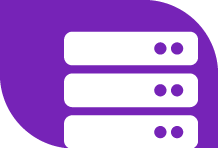Career Development
Individual Development Plans
Career development planning benefits the individual employee as well as the organization by aligning employee training and development efforts with the organization's mission, goals, and objectives. An individual development plan (IDP) is a tool to assist employees in achieving their personal and professional development goals. IDPs help employees and supervisors set expectations for specific learning objectives and competencies. While an IDP is not a performance evaluation tool or a one-time activity, IDPs allow supervisors to clarify performance expectations. IDPs should be viewed as a partnership between an employee and their supervisor, and involves preparation and continuous feedback. Many agencies require IDPs for new and current employees, and encourage employees to update them annually.
When using an IDP, supervisors develop a better understanding of their employees' professional goals, strengths, and development needs. Employees take personal responsibility and accountability for their career development, acquiring or enhancing the skills they need to stay current in their roles. Some of the benefits of an IDP are:
- Provide an administrative mechanism for identifying and tracking development needs and plans
- Assist in planning for the agency's training and development requirements
- Align employee training and development efforts with its mission, goals, and objectives
There are no regulatory requirements mandating employees complete IDPs within the Federal Government, although many employee and leadership development programs require IDPs (e.g. PMF Program). Completing IDPs is considered good management practice, and many agencies have developed their own IDP planning process and forms. While there is no one "correct" form for recording an employee's development plan, an effective plan should include, at minimum, the following key elements:
- Employee profile - name, position title, office, grade/pay band
- Career goals - short-term and long-term goals with estimated and actual competion dates
- Development objectives - linked to work unit mission/goals/objectives and employee's development needs and objectives
- Training and development opportunities - activities in which the employee will pursue with estimated and actual completion dates. These activities may include formal classroom training, web-based training, rotational assignments, shadowing assignments, on-the-job training, self-study programs, and professional conferences/seminars
- Signatures - supervisor and employee signature and date
Executive Development Plans
While there are no regulatory requirements for IDPs, Senior Executive Service (SES) members are required to have a plan for their continued training and development. Under 5 CFR 412.401, all Senior Executives must complete and regularly update an Executive Development Plan (EDP).
Facing constant challenges, changing technologies, and a dynamic environment, executives must pursue ongoing professional executive development to succeed and grow. It is crucial that executives continue to strengthen and enhance their Executive Core Qualifications (ECQs), broaden their perspectives, and strengthen their performance.
Federal agencies are required by law (Title 5, U.S. Code, Section 3396) to establish programs for the continuing development of senior executives.
SES members are required to prepare, implement, and regularly update an EDP as specified by 5 CFR 412.401. The Executive Development Plan (EDP) is a key tool in assisting executives in their continued development. EDPs should outline a senior executive's short-term and long-term developmental activities which will enhance the executive's performance. These activities should meet organizational needs for leadership, managerial improvement, and results.
EDPs should be reviewed annually and revised as appropriate by an Executive Resources Board or similar body designated by the agency to oversee executive development.
If you have any questions regarding training policy or executive development, you can contact us at HRDLeadership@opm.gov.
Individual Learning Accounts
An Individual Learning Account (ILA) is a base amount of resources expressed in terms of dollars and/or hours that is set aside for an individual employee to use for his or her learning and development. Accounts may be used to develop knowledge, skills, and abilities that directly relate to the employee's official duties. An ILA provides a flexible and innovative approach to encouraging agency employees to take control of their own learning and career development. ILAs were piloted in the Federal Government from March 2000 through September 2000.
ILA's can also be used to supplement existing tuition reimbursement programs. Appropriation law requires monies appropriated for a given fiscal year be expended in that fiscal year (31 USC Sec. 1502). Executive Order No. 13111 states: "To the extent permitted by law, ILA accounts may be established with the funds allocated to the agency for employee training. No new funds are required to implement ILA's. The best way to determine if your agency has an ILA program is to inquire at your agency's Human Resources Office.
Mentoring
Mentoring and coaching are both valuable tools to aid personal and professional development. While there are similar aspects to each method, they are fundamentally different in a variety of ways. Mentoring is a process that focuses specifically on providing guidance, direction, and career advice. Federal agencies are required by law (5 U.S.C. 3396) to establish programs to assist senior executives in their continuing development. Coaching's primary emphasis is on maximizing people's potential by working on their perceptions, self-confidence and creative drive.
Mentoring and Coaching efforts can operate as stand-alone programs, or they can be integrated into an organization's training and development program. Many organizations, Federal agencies included, run formal mentoring and coaching programs to enhance career and interpersonal development.
Mentoring is usually a formal or informal relationship between two people-a senior mentor (usually outside the protégé's chain of supervision) and a junior protégé. Mentoring has been identified as an important influence in professional development in both the public and private sector. The war for talent is creating challenges within organizations not only to recruit new talent, but to retain talent. The benefits of mentoring include increased employee performance, retention, commitment to the organization, and knowledge sharing.
Within the Federal Government, mentoring is often a component in developmental programs like the Senior Executive Service Candidate Development Program (SESCDP). Agencies implement formal mentoring programs for different purposes. Some of these purposes include:
- To help new employees settle into the agency
- To create a knowledge sharing environment
- To develop mission critical skills
- To help accelerate one's career
- To improve retention
Informal mentoring is another option for employees to enter into a mentor/protégé relationship. An informal mentoring partnership has less structure and can occur at any time in one's career. The relationship is usually initiated by the mentor or protégé.
Mentoring Resources for Agencies:
Executive Horizons: Advancing to the Senior Executive Service Session Toolkit: This toolkit provides guidance for hosting sessions to mentor employees to advance to the Senior Executive Service (SES) with the intent to strengthen and increase interest and application to the Federal Government’s Senior Executive Service (SES).
Executive Horizons: Advancing to the Senior Executive Service Toolkit
Coaching
What is coaching?
Coaching is an experiential development process which facilitates change and growth in both individuals and groups. In Federal government, coaching is utilized to address professional or business-related challenges. Through structured dialogue, coaches assist their coachees to deepen their insights and translate those insights into actions. Coaches apply specific techniques and skills, approaches, and methodologies that enable the coachees to develop their goals and design actions to achieve them. The coachee drives the coaching agenda, and is ultimately responsible for the outcome of the coaching engagement.
How can I find a coach?
If you are looking for a coach, please contact your agency Coaching Program Manager. They can provide you with information on how to find coaching services.
How can employees promote coaching culture without formal coach training?
Leader as a Coach
It is important for leaders to develop coaching skills so they can help others reach their potential. A leader who leverages coaching techniques will support positive behavior change and develop a growth mindset in his or her employees. When leaders create a coaching culture, the goal is to work with employees to solve performance problems, and improve the work of the employee, team, and the department.
Peer Coaching
A confidential process where two or more professionals work together to reflect on current practices to expand, refine, build new skills, share ideas and solve problems in the workplace. Each participant acts as both the coach and the coachee, collaborating in a highly focused group. They work together in partnership to address each of the topics or challenges presented.
Career Paths
Career paths are an integral part of an effective talent management system. They can inform workforce planning, recruitment, retention, training and development, succession planning, and career development.
The U.S. Office of Personnel Management (OPM) developed Governmentwide career path guides to support training and development initiatives with respect to occupations identified by the Chief Human Capital Officers Council, Congress or the President. The career path guides provide guidance to Federal agencies interested in creating or enhancing their own career paths for the occupation addressed.
Each career paths guide:
- Provides a career progression outline that enables employees to move among and across jobs in the occupation.
- Includes success factors that enable individuals to maximize performance and career advancement.
- Includes general and technical competencies, which help employees and supervisors plan and sequence appropriate career training and development.
- Lists common degrees and certifications the interviewed incumbents of the Federal occupation possess.
The current career path guides available for your use:
Human Resources
-
Classification

-
Compensation

-
Employee Benefits

-
Executive Services

-
Human Resource Development

-
Policy

-
Information Systems

-
Military

-
Performance Management / Employee Relations / Labor Relations

-
Recruitment and Placement

Information Technology
-
IT Program Management

Program and Project Management
-
Federal Program and Project Management

Program Evaluation
-
Federal Program Evaluation

If you have any questions regarding the career path guides, you can contact the Career Paths Team by sending an email to CareerPath@opm.gov.
Agency Career Path Practices
Department of Veterans Affairs' CareerScope Assessment Tool
Veterans may be able to use CareerScope, an online assessment tool, to measure their interests and skill levels. CareerScope also helps Veterans figure out the best career path when they move into civilian life. The tool recommends careers Veterans may enjoy and jobs in which they’re likely to do well. CareerScope also recommends courses or training programs that can help Veterans go after those careers.
Department of the Interior's My DOI Career
Cyber Careers Pathways Tool
In support of the nation's cyber workforce, the Federal Cyber Workforce Management and Coordinating Working Group and the Cybersecurity and Infrastructure Security Agency's (CISA) Cybersecurity Defense Education and Training Team launched the Cyber Careers Pathways Tool, an interactive resource to explore the NICE Workforce Framework for Cybersecurity (NICE Framework). Working professionals (cyber and non-cyber), employers, students and recent grads can explore 52 different kinds of cyber work based on shared communities, skillsets, specialization, and functions. The tool enables individuals to identify, build, and navigate a potential cyber career pathway by increasing understanding of the knowledge, skills, and abilities needed to begin, transition, or advance a cyber career.
Note:
The agency practices listed in this section should not be inferred as an endorsement by OPM. Agency practices are highlighted for informational purposes only. OPM makes no representation as to the reliability of the materials contained on or which can be accessed in this section. OPM is not responsible for actions taken or not taken based on information contained therein.
Related Information
- OPM’s Multipurpose Occupational Systems Analysis Inventory - Close-Ended (MOSAIC) Studies and Competencies
- Workforce Planning
- Recruitment
- Training & Development
- Succession Planning
- Career Paths: Charting Courses to Success for Organizations and Their Employees – Carter, Gary, Kevin Cook and David Dorsey, Wiley-Blackwell, 2009



